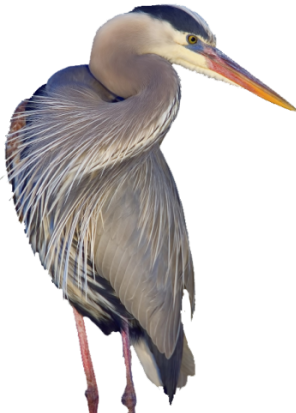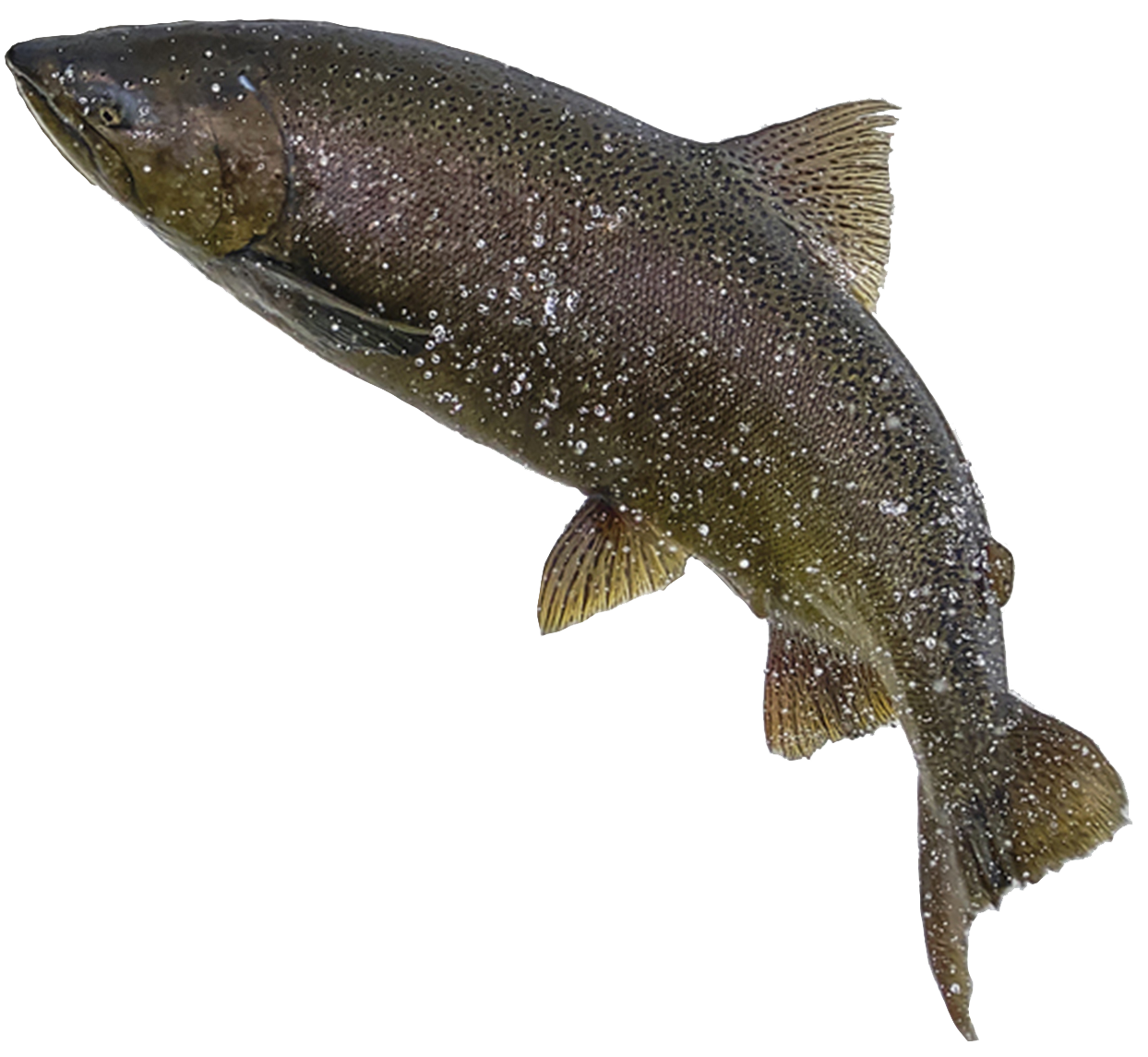Recognizing FWCP
If you received a grant from us, please acknowledge our contribution.
Contact us at fwcp@bchydro.com and we can provide you with the best logo to suit your needs.

Photo: Tim Ennis
We are a partnership between BC Hydro, the Province of B.C., Fisheries and Oceans Canada, First Nations and public stakeholders to conserve and enhance fish and wildlife in watersheds impacted by existing BC Hydro dams.
BC Hydro has water licence obligations in the Columbia and Peace regions, and has made voluntary commitments to address the impacts of dams of the Coastal Region. BC Hydro fulfils the applicable obligations through the work of the FWCP.
BC Hydro works in equal partnership with the Province of B.C., Fisheries and Oceans Canada, First Nations, and public stakeholders by participating on FWCP’s regional Boards
Our three regional boards approved $8.7 million for 81 projects in 2024-2025, including 27 projects in our Coastal Region, 30 in our Columbia Region, and 24 in our Peace Region. Read our project lists. See our project map.
Thriving fish and wildlife populations in watersheds that are functioning and sustainable.
The Fish & Wildlife Compensation Program (FWCP) compensates for fish and wildlife in watersheds impacted by BC Hydro dams.
The Fish & Wildlife Compensation Program (FWCP) acknowledges that the projects we fund are located on the unceded traditional territories and treaty lands of Indigenous peoples who have been caretakers of the land since time immemorial. We are committed to advancing reconciliation with Indigenous peoples through learning, acknowledging, engaging and building respectful relationships as we further implement conservation and enhancement of fish and wildlife in watersheds impacted by BC Hydro dams.
Our three strategic objectives form the basis of our regional action plans. The objectives also support meeting both BC Hydro’s water license conditions in our Columbia and Peace regions and its commitment and intent when voluntarily establishing the FWCP in the Coastal Region in partnership with the Province of B.C., Fisheries and Oceans Canada, First Nations, and the public.
Conservation
Maintain or improve:
1. The status, functionality, and resilience of ecosystems within the FWCP’s three regions.
2. The status of species of interest and their habitats within the FWCP’s three regions.
3. Opportunities for harvesting , non-consumptive and other uses, now and into the future, in recognition that many species of interest have high social and cultural value.
Indigenous Engagement
Strengthen and foster relationships with Indigenous Peoples and communities. This will be addressed in part by strengthening Indigenous engagement in decision-making, project planning, and delivery that supports the FWCP’s conservation objectives.
Community Engagement
Strengthen and foster partnerships and/or relationships with stakeholders, citizens, and agencies that support the FWCP’s conservation objectives.
The FWCP operates in three regions of the province of B.C. with annual funding provided by BC Hydro. In our Columbia and Peace Regions, the FWCP is a mechanism to meet BC Hydro’s water licence conditions. In our Coastal Region BC Hydro’s contribution is voluntary.
In each region a local Board comprised of agencies, First Nations, and public stakeholders guides our work and is responsible for approving all FWCP projects and budgets. FWCP projects are funded and delivered through our annual grants, long-term agreements and partnerships. Our Boards may also choose to direct projects and approve funding to address regional priorities.
See our How we work chart.

Our Governance Manual defines a harmonized governance and delivery framework that recognizes the unique attributes of each of the regions in which we operate – Peace, Columbia and Coastal.
The Governance Manual provides a structure for the delivery of the Program and is used in combination with the FWCP Basin, Watershed, and Action Plans to guide program implementation.
See our How we are structured chart.

The FWCP blends its obligation to address dam impacts with a forward looking approach that recognizes continual adaptation will be required in a dynamic natural environment in order to achieve the FWCP’s vision of thriving fish and wildlife populations in watersheds that are functioning and sustainable.
The FWCP also considers the objectives and priorities of its program partners. The projected local impacts of climate change, cumulative effects on the landscape, emerging ecological issues, and other factors will require the FWCP to respond in ways that will protect past conservation efforts and contribute to the resilience of our watersheds and ecosystems in the future, while remaining focused on its overall mission to conserve and enhance fish and wildlife in watersheds impacted by BC Hydro dams.
In 2019 we completed an independent, third-party evaluation and financial audit as required by our Governance Manual. Outcomes of this evaluation and financial audit will be used to refine, support and strengthen our approach to conserving and enhancing fish and wildlife in watersheds impacted by BC Hydro dams. Read the Evaluation and Financial Audit Summary.
The FWCP is funded annually by BC Hydro. The FWCP directs those funds towards priority actions across its three regions to fulfil its mission and work towards its vision of thriving fish and wildlife populations in watersheds that are functioning and sustainable. The Fish & Wildlife Compensation Program conserves and enhances fish and wildlife in watersheds impacted by BC Hydro dams.
BC Hydro has water licence obligations in the Columbia and Peace regions, and has made voluntary commitments to address the impacts of dams of the Coastal Region. BC Hydro fulfils the applicable obligations through the work of the FWCP.
BC Hydro works in equal partnership with the Province of B.C., Fisheries and Oceans Canada, First Nations and public stakeholders by participating on FWCP’s regional Boards.
Independent Board Members in each region review, evaluate, and approve funding for all projects. Our Boards include representatives from each of our FWCP partners: BC Hydro, the Province of B.C., Fisheries and Oceans Canada, First Nations, and public stakeholders. When it comes to decision-making, input from each Board Member is given equal consideration through collaborative discussion.
The Coastal Region includes Vancouver Island, the Lower Mainland, and the Southern Interior. See map. Coastal Region Board and Committee Members review grant applications in this region.
The Columbia Region includes the East and West Kootenay, Valemount and the upper Columbia River. See map. Columbia Region Board, First Nations Working Group, and Committee Members review grant applications in this region.
The Peace Region includes the communities of Mackenzie, McLeod Lake, Hudson’s Hope, Tsay Keh Village, and Fort Ware, as well as the traditional territories of many other First Nations in the region. See map. Peace Region Board, First Nations Working Group and Committee Members review grant applications in this region.
If you received a grant from us, please acknowledge our contribution.
Contact us at fwcp@bchydro.com and we can provide you with the best logo to suit your needs.
Coastal Region board endorses plan to begin updating its 14 watershed-based action plans.
Columbia Region formalizes First Nations Working Group as part of ongoing work to strengthen engagement of First Nations in the region’s leadership, decision-making, project planning, and delivery.
Despite COVID-19 global pandemic, work continues to deliver 100 projects approved for 2021 – 2022.
Work to implement 2019 audit recommendations continues.
Peace Region completes updates to the ecosystem-based action plans that guide funding in the region.
Peace Region initiates process to update the ecosystem-based action plans that guide funding in the region.
Independent evaluation and financial audit completed; summary report is available online. fwcp.ca/evaluation-audit-2018-2019
Columbia Region completes updates to the ecosystem-based action plans that guide funding in the region.
Columbia Region initiates process to update action plans based on agency, technical, First Nations, and public stakeholder input.
Coastal Region completes process to update and streamline watershed and action plans. New watershed action plans are prepared with agency, technical, First Nations', and public stakeholder input.
An overall full-time program manager position is created to coordinate activities across the FWCP’s three regions. Each region now has a dedicated manager.
Online grant management system launched, streamlining application and reporting, and improving access to project data and results.
FWCP project reports are now posted on Provincial databases, making reports, results and data widely available.
FWCP launches fwcp.ca with dynamic regional map of projects, links to project reports and improved access to information about the program.
A survey of perceptions of the FWCP, and improvement opportunities, is undertaken by an independent third-party. A final report was received in 2016.
New program-wide Governance Manual is finalized and provides clarity and guidance on FWCP structure, and decision-making procedures.
FWCP's Peace Region finalizes Basin and Action Plans for the region. Action Plans provide strategic guidance for FWCP investments in fish and wildlife projects.
FWCP partners with Columbia Basin Trust to develop and deliver the Upper Kootenay Ecosystem Enhancement Plan.
As a result of 2012 changes to the delivery model, the FWCP's Columbia Region enters into a long-term agreement with the Province of B.C. (Ministry of Forests, Lands and Natural Resource Operations) to deliver annual, ongoing core projects on behalf of the FWCP.
The FWCP’s new delivery model is implemented across its three regions. The new model includes strengthened local decision making at the Board level, and shifts towards engaging more stewardship groups and others in the development of project proposals that align with Action Plans.
FWCP's Peace Region signs Memorandum of Understanding with First Nations in the region that establishes unique First Nations Working Group that provides advice to the regional Board, fish and wildlife technical committees, and the Program Manager.
FWCP's Columbia Region finalizes Basin and Action Plans for the region. Action Plans provide strategic guidance for FWCP investments in fish and wildlife projects.
FWCP's Coastal Region finalizes Watershed and Action Plans for each of the 14 watersheds where the FWCP operates in this region. Action Plans provide strategic guidance for FWCP investments in fish and wildlife projects.
Following a comprehensive and independent evaluation in 2008, the three regions begin operating in a more harmonized manner, following a more consistent approach to delivering fish and wildlife projects.
Bridge Coastal Restoration Program established, now known as the FWCP's Coastal Region.
Columbia Basin Fish and Wildlife Compensation Program established in Columbia Region, now known as the FWCP's Columbia Region.
Peace-Williston Fish and Wildlife Compensation Program established in Peace Region, now known as the FWCP's Peace Region.
The Fish & Wildlife Compensation Program is a partnership between BC Hydro, the Province of B.C., Fisheries and Oceans Canada, First Nations and public stakeholders to conserve and enhance fish and wildlife in watersheds impacted by BC Hydro dams.
